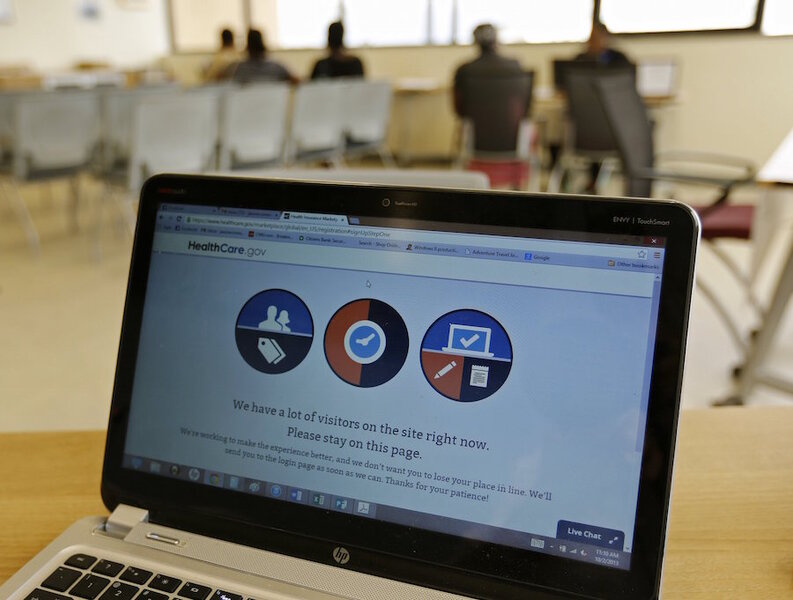Do ABLE accounts really help?
Loading...
Last December, President Obama signed into law the Achieving a Better Life Experience (ABLE) Act. ABLE looks a lot like a state-run 529 college savings plan, but for individuals diagnosed with disabilities before age 26. Family and friends can contribute up to $14,000 annually in after-tax income without triggering the gift tax, and beneficiaries can make tax-free withdrawals for housing, transportation, assistive technology, home health aides, or other personal assistance.
Before its passage, my TPC colleague Howard Gleckman asked whether ABLE accounts were the right financial solution for people with disabilities. At the time, my gut said “Yes!”
My gut, admittedly, is biased. I have a seven-year-old niece in Wisconsin who is not only adorable and in the second grade, but also has Down syndrome. Now, the Tax Hound in me wonders whether the law would be of much use to her—or most people with disabilities.
Family and friends in Wisconsin can deduct contributions to my niece’s ABLE account on their Wisconsin state income tax returns. That’s a nice tax shelter. But for my brother and his wife who are upper middle-income earners, an ABLE account is especially nice because it generally doesn’t count in the “asset test” that their daughter has to pass in order to qualify for Medicaid or Supplemental Security Income (SSI).
But there’s a catch.
My brother and sister-in-law learned years ago that in order for their daughter to continue to receive Medicaid, and in the future, SSI, they need to keep her, in the words of their attorney, “in a state of poverty.” My niece cannot have more than $2,000 in her own name. ABLE provides an exception to that rule, up to a point.
Imagine my brother and his wife open an ABLE account for their daughter in 2016, when Wisconsin is ready to offer them. My niece’s large circle of family and friends can contribute up to the $14,000 annual limit and happily watch her account grow. (It can’t grow past $425,000, just like the state’s 529 college savings plan.)
As an adult, my niece would be able to withdraw from her account and perhaps live independently. This is vital, since many children with developmental disabilities will eventually outlive their parents.
Here’s the catch: There’s a good chance that by the time she reaches 18 the value of her account will exceed $102,000. If her nest egg tops that amount, the state would suspend her SSI benefits until her account fell below that threshold. In 2016, the maximum federal monthly benefit for an individual will be $733. The state of Wisconsin supplements that with an additional $84.
An account of $102,000 seems like a lot. But if that amount is turned into an annuity, it would pay out only a few hundred dollars a month (assuming a 50-year payout and current interest rates). That won’t pay for much personal assistance. My niece is doing well, but it’s too early to tell what kind of job she might be able to secure when she’s an adult. An extra $800 in SSI would really help.
As I explained this to my brother and his wife, they were in a word, gobsmacked. To them, it seems the program is less about being “able” to plan for their daughter’s future and more about spending down assets to maintain her SSI eligibility.
They were, in another word, resigned. My sister-in-law put it this way: “It’s just another drop in the ocean of worry that keeps me up every night, wondering what will happen to her if and when we’re not here.”
On the bright side: My niece would still get Medicaid, which she has been receiving since she was six months old. With ABLE, there’d also be a “Medicaid payback provision.” Imagine my niece passes away unexpectedly at age 49. Wisconsin would recoup any Medicaid expenses incurred after her ABLE account opened—over 40 years’ worth—from any remaining funds in the account.
Assuming the money stays in Medicaid, my niece’s account balance would help others in need, which is without a doubt a very good thing. Whatever was left over would go to my niece’s designated beneficiaries (her two younger sisters, who would pay ordinary income tax on any investment returns).
The truth is, my niece is one of the lucky ones. She has friends and relatives with the financial resources to contribute to her ABLE account in the first place.
What about the children with developmental disabilities who don’t? And what of adults who become disabled after age 26, and are thus ineligible for the ABLE program?
Last year, Howard worried that ABLE might end up more of a tax shelter for wealthier families of individuals with disabilities. He hoped that Congress didn’t think ABLE was a complete solution to the financial problems of families like my niece’s. I worry, too.
Will Congress eventually do more to help people with disabilities achieve the best possible life experience? Well, my niece’s name is Asha and her name means “hope.” It springs eternal.
This article first appeared at TaxVox.







